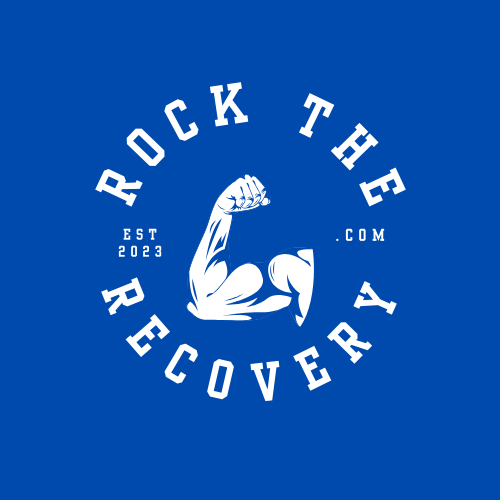You’ve been waiting at the hospital for possibly hours, and the transport van finally shows up. You’re likely happy to be moving on from the hospital. As you should be. This means you are now medically stable to move onto a rehab facility. That’s a step in the right direction toward ultimately going home! Meaning you weren’t quite safe or ready to do so when the hospital was ready to discharge you. With the Hospital stay behind you let’s discuss how to succeed during your short-term rehab stay.
After sitting in that uncomfortable wheelchair and then being “jostled around” on the trip over. You will likely just want to lay down and rest. Settle into your new room with the help of family and friends to unpack, but don’t get too comfy just yet. You may soon be bombarded with food menus, Doctors, Therapists, Nurses, and a Dietician wondering about your gluten intolerance. Don’t worry you will soon find that Rehab is actually quieter than the hospital, but first there’s a lot of intake info that needs to be completed.
The Therapy Basics:
First please understand that your insurance company has agreed to pay for your stay in the facility based on the fact that you will be participating in your Therapies. This way you can ultimately get stronger and go home. So, please leave the: “I don’t like to exercise, so I’m not going to” at the door. There are only a few unique instances where your insurance will cover the stay for purely medical needs. This includes IV medications, or very advanced multiday wound care changes and monitoring.
In either case you will likely be evaluated by a Physical Therapist (PT), an Occupational Therapist (OT), and possibly a Speech Language Pathologist (SLP) depending on your needs. Most understand the role of the PT as the team who will work on your ability to stand up, walk (or ambulate) manage stairs, work on your leg strength, get out of the car and balance etc. They will also assign you an appropriate assistive device, if necessary, like a front wheeled walker.

Occupational Therapy’s roll however gets a lot of questions such as: “why do I need that; I’m retired.” Occupational Therapists work toward the same goals as the PT however from a different angle. They will work on specific Activity of Daily Living Tasks such as: dressing, toileting, bathing/showering, morning routines, and eating. This will often happen by practicing the tasks, teaching you easier methods to do them in your current state of health, recommending adaptive equipment that can make you successful, and in the meantime build your strength and endurance for the tasks. They will also in many facilities work on the upper extremity strength/fine motor coordination, safety and cognition, as well as vision training. Much of the time they are also involved in assigning you an appropriate wheelchair if necessary.
Speech Therapy is reserved for those who have one of two issues. Either one they are struggling with swallowing food or drinks. Often with the concerns of either choking or aspiration/ allowing food/drink to go down “the wrong pipe”. Or two, they are struggling with speaking and communication. Speech is also involved in safety and cognition testing in some cases.
If you are reading this and start to scoff at the need for one of these Therapies, first understand that much of your time in rehab is spent sitting/lying and waiting. So, before you discount the need for the help understand that even though you may feel like: “I don’t need this Therapy, I can do that already.” Understand that these sessions are all opportunities to build on the things you do need to succeed. Take all the help you can get.
Other staff you will encounter:
You are going to meet about a 1,000 people in rehab before your time is up. Each will have a different role and it’s important to know each person’s job. Telling your aid (or CNA) that you are in pain may not be the same as telling the nurse. Unless that aid will pass that information onto the nurse, you are wasting your time. So, understanding who you’re speaking to, is helpful. Some facilities have each job differentiated by color uniforms.
Medical Team: The medical team is comprised of the Medical Doctor (MD), and possibly Physician Assistants (PA) and Nurse Practitioners NP). Of course, you are likely to just hear the abbreviations. It is often heard: “I never saw a doctor” 5 minutes after the PA left the room. Understand that these staff members each have the ability to examine you and prescribe solutions to your issue. Also understand that upon your discharge from the hospital, it is stipulated that you are relatively medically stable. Because of this you won’t necessarily see the medical team unless something comes up. You will likely meet them in the beginning of your stay, and hopefully if you don’t see them again, that is a good sign that you remained healthy and are doing great.
Nursing: Nursing is comprised of Registered Nurses (RN) Liscensed Practical Nurses (LPN) as well as Certified Nursing assistants (CNA). The RN and LPN’s will be providing you with your medications, breathing treatments, and oxygen, bandages/dressings, taking your vitals, and being the first line of defense if anything is going wrong. This is who you tell if you are in pain or need a medication. You can tell them if you have any other medical concerns as well.
The CNA’s in contrast are there to help with (based on the Therapist recommendations) helping you get around your room, help you out of bed on the toilet, get dressed, washed or showered and shaved etc. Know that showers are typically going to be maybe 1x per week if you are medically allowed, but your OT may also want to see a shower while you’re there.
Social Work: The Social Worker (MSW) assigned to you during your stay will work closely with your Therapists to plan your safe discharge. They are there to keep track of your mental/psychological well-being. As well as make sure you are set up with appropriate services after your discharge. They can also provide you with options if home is no longer your safest choice.
Others: The list goes on and on, but you may also encounter a dietician, who can help educate you on meal planning. Meal aids who bring and take away your food. Housekeeping for cleaning your room. Supervisors, who we will discuss later in the next article.
Now that you understand who the big players are, it’s time to better understand how you fit into all of it, and how to succeed during your short-term rehab stay.
Following the guidance of the Doctors and Therapists:
During your first few days in Rehab the Therapist will come and evaluate you. Every facility is going to have some kind of way to communicate your functional needs to your support staff including the CNAs or meal aids. This way they know how to help you safely move around the room. This might include recommendations including not getting up by yourself. This is for your safety, and this is also WHY you are here. If you could get up and walk to the bathroom by yourself, then your insurance company would have likely denied your admission to rehab. People fall all the time in rehab facilities because they just didn’t listen to this piece of advice.
Your medical doctors in the hospital also may have given you restrictions. A popular one is weight bearing limitations for broken bones. Others include lifting/reaching restrictions after cardiac or pacemaker placement. Hip precautions after a hip replacement or wearing a brace from back surgery. These are to be followed at all times, unless you want to go back to the hospital and explain to surgeon why you messed up his work and need to start all over again. If you have questions, ask. Speak up, if you note that staff are unaware of the instructions given from the hospital.
Pain management:
Therapies will likely be coming in 5-6 times in a week depending on the facility you are in. Like mentioned before, it is important to participate in every opportunity you are given. One issue that comes up for people is pain management and the ability to participate. It’s important to understand first how your pain medications (if you are on them) are prescribed when you transferred to Rehab. It may have changed, for instance to “as needed/PRN”. If it is not working for you, make sure to discuss with the medical team.
An important point to make here is that when in pain it is important that you make this known. However, do not allow this to impede on participation in Therapies. A good Therapist will either attempt to help treat your issue, or in the very least can reassess his/her plan to your tolerance. Also understand that many times, the pain is coming from a lack of movement, and you will likely feel better after the session. Plus remember, this is why you are here!
Congrats! You made it through the basics, let’s move on to article 2!

